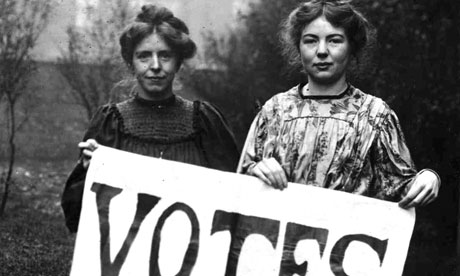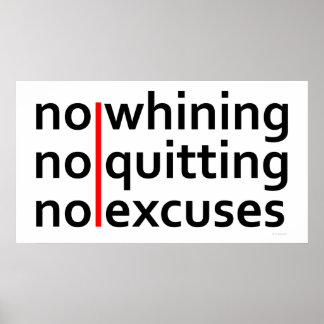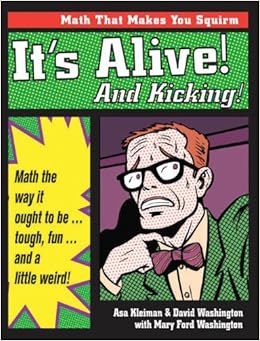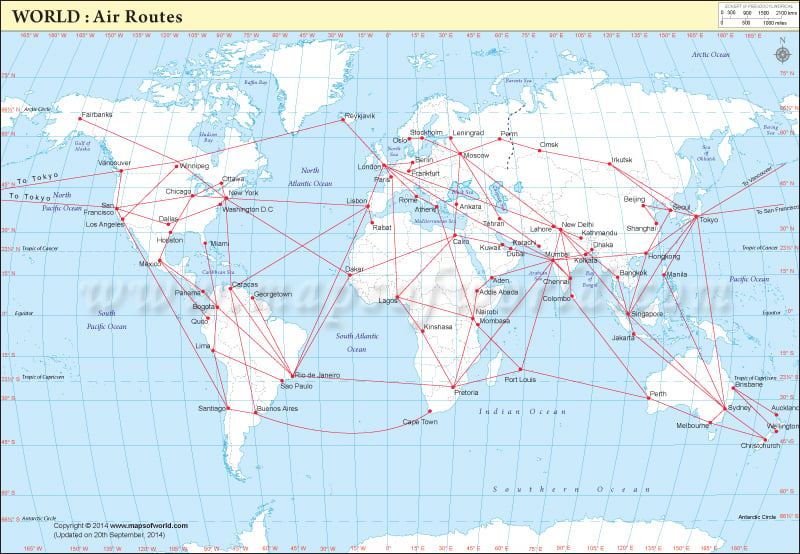About Me

- Tina Dittrich
- Welcome to my math blog! The purpose of this blog is to help you stay informed about our learning and experiences that have taken place during our math class. I have also included links your child (and you) may want to use in order to supplement math learning in 5th grade.
Tuesday, March 31, 2015
Monday, March 30, 2015
Coordinate Graphing Notes
NO technology?!?! Yep, for the next two days, we are being asked to keep off Chromebooks. We are taking the STAAR test over the next two days (today is 4th grade) and a new ruling from TEA allows students with dyslexia to take their tests online. So, this being new and all, we are to steer clear of using any of the bandwidth to ensure that there are no computer glitches during testing!
It really is ok.... for a day or two!
My week of Social Studies is over, but today we watched the PowToons we created (we can use the teacher computer) about The Unfair Treatment of African-Americans During the Early 20th Century. If you would like to view these, please visit of Kidblog pages:
- http://kidblog.org/AWEDittrich/
- http://kidblog.org/AWEWhitehead/
- http://kidblog.org/AWEJohnson/
-------------------------------------------------------------
After completing the PowToons we moved into math. In our math journal, we labeled the x-axis, y-axis, and point of origin. We also created the ordered pair of numbers that plots a point on the grid (aka coordinates). If you would like to view the lesson, please watch the video: Ordered Pairs.
We finished up by creating a picture using ordered pairs. The picture is called "A Cheerful Earful". I will post the picture once students have turned it in. I have not assigned it as homework as we have a Reading STAAR test tomorrow.
Friday, March 27, 2015
Little More of This.... Little More of That!
We finished up our week with Social Studies today. First we embedded our PowToon projects to Kidblog. This process took about 20 minutes, but things are starting to move more quickly as we learn how to share our ideas and projects on Kidblog. I have not seen them yet.... We will watch 10 of the projects on Monday and the final projects of Tuesday.
Next, we took our Social Studies Week 22 Test. This week had been about "Changing Times," which included the segregation of African-Americans and the discrimination of African-Americans and women. They took the test on paper, but they put their answers on a Google form and submitted them for grading.
To finish off our day we worked on TTM. The kids have 3 weeks to get a total of 30 lessons passed.
Thursday, March 26, 2015
Little Bit of This, Little Bit of That
Our first little bit was Social Studies. We read two articles from our newspaper about women's lack of a right to vote and Susan B. Anthony. My favorite part was watching the video from School House Rock, "Sufferin' for Sufferage!" We have done quite a bit with technology lately, but today's activity was "old school." We took six cause and effect statements and paired them. I allowed the tables to work as a group because the information could be a little tricky!
Our next little bit was working with Kidblog. Yesterday, I purchased the Teacher Premium portion of Kidblog that allows for a few extra bells and whistles, and I needed the kids help to quickly (haha) put them into place (it was quicker than working alone)!
First we logged on to Kidblog, went to our profiles and connected our web services. Basically, we are now able to embed any of the work they do in Google Drive to their Kidblog page with only one click! Next, I asked each of them to type in their school email into their profile. Now, they can logon to Kidblog through their Google account. There was a step I needed to do on my end to make this work, so they used that 5 minutes to choose an avatar for their profile. Finally, each student opened the four posts they have created and assigned it a category. This will allow them to search for posts more easily within a subject area.
Mrs. Whitehead has also joined our Kidblog accounts as a teacher. This means, you will now see Science posts along with Math and Social Studies!
We were not able to post our PowToons to Kidblog today due to time, so kids have a break on getting them finished. They are due tomorrow!
Our last little bit was math. We completed a Countdown to STAAR spiral review. Our STAAR test is going to be on Monday, April 20.
Our Think30 celebration will be on May 6. We will go to Chuck E. Cheese (kids only need money for tokens) and a movie (kids only need money for concessions).
Wednesday, March 25, 2015
Global Blogging Challenge and Powtoon!
This is our last week to participate in the Global Blogging Challenge. However, it will not be our last week to post to our Kidblog! Since, this was our last GBC assignment, I gave up math time today to make sure we were able to complete the assignment. The topic was:
Global Blogging Challenge Week 4
Post a picture of a place that is special to you. This place could be as simple as your backyard where you get to visit every day. It could be a place where you have only visited once, but you'll never forget it. Your special place could be somewhere that you enjoy alone or with family and friends. Let your readers know about this special place, what makes it so special, and help us feel as if we are there.
First, we answered the prompt on a Google Doc. Then, we copied and pasted our picture and our response into a new post on Kidblog. Please check out the blogs and leave a comment! Remember, we are using the computer's ability to spell check and grammar check our writing in an effort to learn how to use technology to our benefit. I allowed the writing to be submitted as they saw fit and will be counting off for editing errors that remain.
The remainder of our class was creating a PowToon titled "The Unfair Treatment of African-Americans in the Early 20th Century." I asked the students to highlight four terms in their Social Studies newspaper: Booker T. Washington, discrimination, segregation, and Black Codes. I explained that they were going to use these terms in their PowToon to explain the unfair treatment of African-Americans. I also asked them to create a slide explaining how discrimination and segregation were alike AND a slide explaining how they were different.
I have discovered how to embed their PowToon to their Kidblog.... stay tuned!
Tuesday, March 24, 2015
Toys of the 20th Century and Think Through Math
We began our class with Social Studies. We read about changes taking place in the 20th century which included massive changes in technology including networks for trolley cars, subway trains, telephones, radios, etc. These same changes led to mass production in the manufacturing of cars and a group of people called Progressives, that wanted the government to step in and regulate large corporations from becoming monopolies.
After reading about all of these changes, I mentioned that there were also changes happening for children. New toys were being invented. I explained that this came about due to the fact that children did not have to help work on family farms and, therefore, had more time on their hands. I also stated that they might be surprised that some of the toys invented one hundred years ago are still played with today!
I explained that they would be looking up the toys invented in the early 20th century (between 1900 - 1960), choose 5 toys that they know to be still popular and that they believe will be popular in another 100 years. Of course, they would have to justify their thinking! We got onto Google Classroom and went to Social Studies. There, they opened the Google Doc that they would turn in and the link to the Toys of the 20th Century. Then I turned them loose!
Global Blogging Challenge Week 4
Post a picture of a place that is special to you. This place could be as simple as your backyard where you get to visit every day. It could be a place where you have only visited once, but you'll never forget it. Your special place could be somewhere that you enjoy alone or with family and friends. Let your readers know about this special place, what makes it so special, and help us feel as if we are there.
- If you did not take the picture of your special place, give credit to those who did.
- Make sure that your picture does not give identifying information to the world.
- Follow any other guidelines for this project that your parents, teacher, and/or school have put into place.
Once they had completed their assignment, they had some time to work on their Global Blogging Challenge assignment that is due tomorrow. Again, they can work on a Google Doc and type the assignment now, or they can use notebook paper.
Finally, we spent the last 30 minutes working on Think Through Math. We are coming down to the wire. Students have a little over 3 weeks to achieve their goal of Think30! Progress reports will be coming home tomorrow. I am attaching a note that tells how many lessons your child has passed.
Monday, March 23, 2015
Vocabulary Voki
This is my week to teach Social Studies, so my math time is limited. We will do math review daily, but my emphasis will be with Social Studies.
Today in math we completed a Countdown to STAAR. Just FYI, our Math STAAR is 4 weeks away.
In Social Studies, we created a Vocabulary Voki. A Voki is basically a talking avatar. To begin, I gave each student a vocabulary word and we opened a Google Doc using the "create" button within their assignment in Google Classroom. On the Google Doc, I asked students to (1) name their vocabulary word (2) define their vocabulary word (3) find and type the sentence from their Social Studies newspaper that contained the word, and (4) explain, in their own words, how the definition clarified the meaning of the sentence.
Next, we copied all of the information from the Google Doc and pasted it into the "text to speech" option on the Voki. I do it this way, so that we can't accidentally lose anything and have to start from scratch. Then I allowed 15 minutes to create the Voki of their dreams! This included listening to the speech options and choosing one that was not only fun, but also was understandable to those who would listen (me)!
Our next step was to go back to Google Classroom and "add" the link to their Voki to their assignment and turn the assignment in. This process allows the Voki and the Google Doc to be saved to each individual student Drive account. Basically, they will always be able to find it!
Finally, we took the Voki and posted it to their blog using the HTML code. Now, when you visit the blog, each student has a working vocabulary Voki to view! Please feel free to visit our class blogs and leave a comment!
Today in math we completed a Countdown to STAAR. Just FYI, our Math STAAR is 4 weeks away.
In Social Studies, we created a Vocabulary Voki. A Voki is basically a talking avatar. To begin, I gave each student a vocabulary word and we opened a Google Doc using the "create" button within their assignment in Google Classroom. On the Google Doc, I asked students to (1) name their vocabulary word (2) define their vocabulary word (3) find and type the sentence from their Social Studies newspaper that contained the word, and (4) explain, in their own words, how the definition clarified the meaning of the sentence.
Next, we copied all of the information from the Google Doc and pasted it into the "text to speech" option on the Voki. I do it this way, so that we can't accidentally lose anything and have to start from scratch. Then I allowed 15 minutes to create the Voki of their dreams! This included listening to the speech options and choosing one that was not only fun, but also was understandable to those who would listen (me)!
Our next step was to go back to Google Classroom and "add" the link to their Voki to their assignment and turn the assignment in. This process allows the Voki and the Google Doc to be saved to each individual student Drive account. Basically, they will always be able to find it!
Finally, we took the Voki and posted it to their blog using the HTML code. Now, when you visit the blog, each student has a working vocabulary Voki to view! Please feel free to visit our class blogs and leave a comment!
- http://kidblog.org/AWEDittrich/
- http://kidblog.org/AWEWhitehead/
- http://kidblog.org/AWEJohnson/
Friday, March 13, 2015
Measurement: Capacity (Customary and Metric) Conversions
The day before Spring Break... nuff said!
Actually, we completed our work with measurement by doing a final Kahoot. This time, we converted capacity measurements.
We also spent time on Kidblog. Today, the classes responded to comments they have received on their stories. Then, I asked them to locate another class from the spreadsheet to connect with. They were to leave a new comment with a student they had not connected with.
It was a pretty laid back kind of day!
Have a great Spring Break!
March 16 - 23
Thursday, March 12, 2015
Measurement: Weight (Customary and Metric) Conversions
Our topic today was conversion of units using weight and mass. Weight is the pull of gravity on an object, and we use measurements of ounces, pounds, and tons in America. Weight is measured on a scale and weight changes when you (hypothetically) go to another planet because the amount of the pull of gravity has changed.
Mass, on the other hand, is the amount of matter something contains. It is measured using a balance. The amount of matter does NOT change if you go to another planet, so your mass measurement is constant. All countries (other than the U.S.) use the measurement of mass to determine the amount of matter an object contains (including humans).
I used Kahoot to present the word problems to my students. I find that my students will work all kinds of problems, happily, when playing a game. Today, they solved 15 WORD problems without any whining! That is always a good day!
We also spent time working on a Countdown to STAAR. We complete one just about every other day, in an effort to have a spiral review (a review of concepts previously taught).
Wednesday, March 11, 2015
Measurement: Length (Customary and Metric)
Our focus today was working with converting length measurements. We work with both Customary and Metric units. In an effort to make this topic engaging, I created a Kahoot for the classes to play. I used word problems from two books that included factoids that I thought the kids would enjoy:
I also decided to have the classes work in table groups. I felt it was important for there to be student interaction as they worked on solving problems. This would allow to hear and see how problems, involving converting length measurements, could be solved.
Then, when we posted to the blog, our grammar checker kicked in. We use an extension called "Ginger". The program looks over their writing and highlights both spelling errors and grammar errors. I like this because it shows students where commas are needed, or where the punctuation is incorrect, and it even gives phrasing options. I think this will be a powerful tool as we continue to use our Chromebooks during writing assignments.
Tuesday, March 10, 2015
Appropriate Measurement Tools and Units
My math class seems to be a multitudinous grouping of different activities! For example, today, we began with a writing assignment. I want the kids to think about math a little differently in order to stretch their brains. I used a book titled, The Write Math: Writing in the Math Class by Cathy Marks Krpan to help us
I gave them a choice of two prompts:
If you could pick ONE of the geometric shapes
we have studied to represent happiness, which
one would you choose and why?
OR
If mathematics were an animal, what type of
animal would it be? Why? Support your
choice with mathematics.
Once we finished our writing exercise, it was time to Kahoot! Today's Kahoot was about the tools and units we use to measure length, weight/mass, and volumen/capacity. We answered these questions using both customary and metric measurements.
After Kahoot, we completed a Countdown to STAAR. Finally, the students had a choice of writing their story for our Global Blogging Challenge that is due tomorrow.
Like I said, multitudinous!
Monday, March 9, 2015
Quadrilaterals
We began our lesson by playing Kahoot! Our topic was "Quadrilaterals." Each statement was to be answered with "Always," "Sometimes," or "Never." This was intended to be a formative assessment that also got their brains working (hard to do when we have the Daylight Savings change). The statements I gave to the students were:
- A square is a rectangle.
- A square is a rhombus.
- A rhombus is a parallelogram.
- A kite is a parallelogram when it is a rhombus.
- A rectangle is a square.
- A parallelogram has one pair of obtuse angles.
- A parallelogram is a rectangle.
- A rhombus is a square.
- A kite has four right angles.
- A trapezoid has no parallel sides.
- A quadrilateral has four acute angles.
- A trapezoid is a parallelogram.
After we finished our warm-up, we took some notes on quadrilaterals and their critical attributes.
To hear my lesson describing the critical attributes of quadrilaterals, parallelograms (rectangles, square, rhombus) and trapezoids, please watch the video: Quadrilaterals. After taking our notes, I gave each student a copy of "Quadrilateral Pieces" that I found in Navigating Through Geometry in Grades 3-5 from NCTM. Then, using a page from our math textbook, students classified the quadrilaterals and placed them on a Venn-Diagram.
Finally, students went back to the Google Classroom, opened a form I had sent them, and answered:
Explain why the circle for parallelograms does not
Once the math lesson was complete, students got onto Think Through Math. We have 5 weeks until our STAAR test, so students have 5 weeks to achieve their Think30! The goal is going to Chuck E Cheese and a movie in May!
Friday, March 6, 2015
Global Blogging Challenge
This was our first day to see our
I began by brainstorming with my students a list of things that should be included in a comment. Just leaving "That's cool," doesn't cut it! Our list of ideas included:
- Content
give specific detailsgive a complimentput your name (first) and location (Texas, USA)ask a questionno negativeshigh level vocabulary- Mechanics
capitalization sentences proper nouns (I)punctuation correct spelling- Format - Letter
topic sentence, conclusiongreeting , closing
I also included a sample form students can use to write an appropriate comment:
Dear ____________,
I enjoyed reading about _____________ because _____________________. I especially liked ______________. Did you know __________________? I was wondering ________________? I hope to hear from you soon, My blog is at _________________.
Sincerely,
First Name (Texas, USA)
We spent the remainder of our class finding student blogs and posting comments. Next week, we will only spend about 30 minutes total on this activity.
Please feel free to look at our blogs (use the links on the left side of this page titled Let's Blog) and please leave a comment. My student's would love to hear from you!
Thursday, March 5, 2015
Wednesday, March 4, 2015
Triangles
Today our focus was on the six types of triangles. Our learning goal was to identify the types of triangles (acute, obtuse, right, equilateral, isosceles and scalene) by looking at the angles and side attributes. I got the idea for this activity from Interactive Math Journal from Runde's Room.
To begin, I did another formative assessment with the
- Triangles are named by their angles.
- Triangles are named by the number of congruent sides.
- A right triangle has t
wo right angles. - An acute triangle has all acute angles.
- An obtuse triangle has three obtuse angles.
- An equivalent triangle has 3 congruent sides and angles.
- A triangle can have two names.
- An isosceles triangle
is named for its two congruent sides. - A scalene triangle
is named for its angles. - The angles within a triangle measure 180 degrees.
- A triangle is the most stable shape.
Next, I handed each student a sheet of paper with six triangles on them. We numbered the triangles and cut them apart
Once we had taken the notes, we revisited our formative assessment page to discuss how we would answer the statements now:
- Triangles are named by their angles: Sometimes (acute, obtuse, right)
- Triangles are named by the number of congruent sides: Sometimes (equilateral, isosceles, scalene)
- A right triangle has two right angles: Never
- An acute triangle has all acute angles: Always
- An obtuse triangle has three obtuse angles: Never
- An equivalent triangle has 3 congruent sides and angles: Always
- A triangle can have two names: Always (one
for the angles AND onefor the sides) - An isosceles triangle
is named for its two congruent sides. Always - A scalene triangle
is named for its angles: Never (it is named for its sides) - The angles within a triangle measure 180 degrees: Always
- A triangle is the most stable shape: Always
Tuesday, March 3, 2015
Classify Angles
We began with some VERY quick notes about angles today. I know my students understand right angles (90 degrees), acute angles
I gave the students an activity from the AIMS Education Foundation called "Flight Paths." Basically, students use a ruler to connect three cities and form an angle. Once the angle was formed, I demonstrated using an index card to determine whether the angle was acute, obtuse, or a right angle. You can watch this demonstration on my video: Angles.
I did not ask the students to find the exact measurement of each angle, this is not a 5th grade TEK. Instead, I asked them to label the angle <90 degrees, >90 degrees, or 90 degrees.
The kids really enjoyed this activity! There was not a moment off task! The most challenging part of the activity was finding the cities on the map. I like when they can see how math intermingles with other content areas!
Monday, March 2, 2015
Read Across America/Global Blogging Challenge/Math/Social Studies Test
Our morning began with DEAR (Drop Everything And Read) in response Read Across America Week. The importance of reading is well documented, but here is a graphic that sort of pushes this idea home:
Once we were back on a regular schedule, we moved on to our classes. This was a very choppy day in my classroom...
First, I introduced my students to the Global Blogging Challenge. Each year, I have my students join the challenge to encourage them to create and post a written assignment, post it to our
Today was about the writing assignment. Students are going to create an "I Am" poem using a format that I give to them. This will be due on Wednesday at which time we will prepare our writing to be posted to our blog. You may find my example at: I Am Tina
Second, we moved into defining some geometrical terms. I began with a formative assessment called "A&D Assessments." I found this in a book called Mathematics Formative Assessment by Page Keeley and Cheryl Rose Tobey. This is basically a "fact/fiction" statement. The students choose between (1) I agree, (2) I disagree, (3) It depends, and (4) I'm not sure. They are to justify their choice with their thoughts.
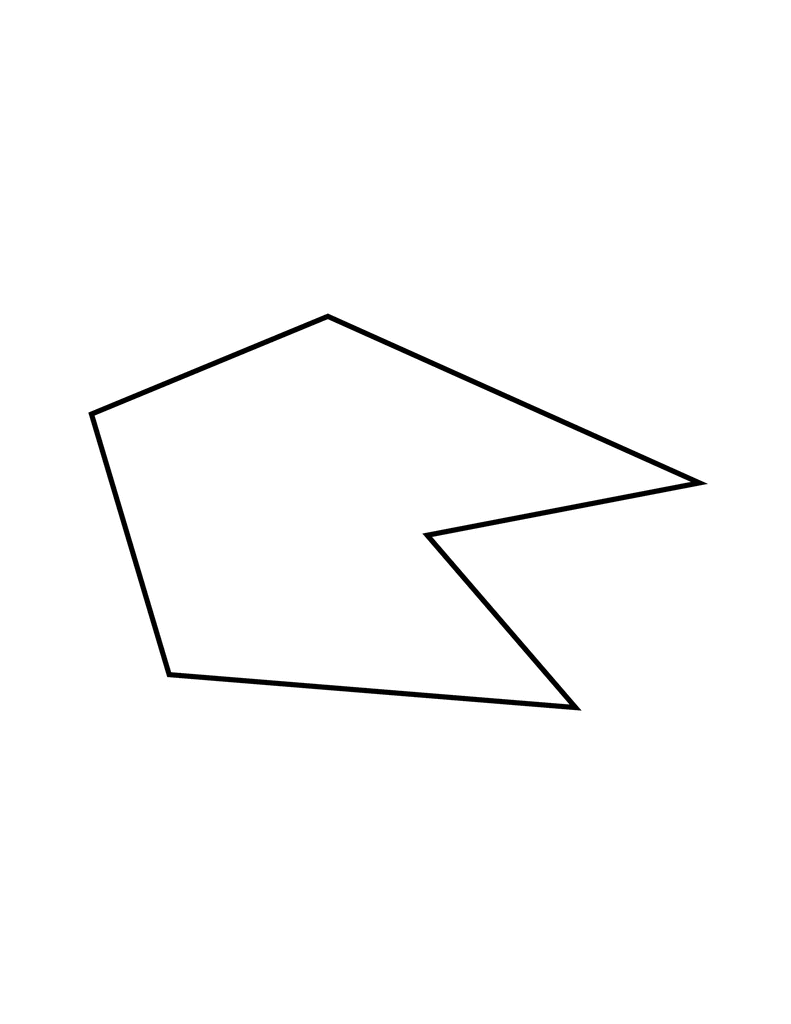 It was very interesting to hear their misconceptions about plane figures. For example, most of the students did not believe that the irregular hexagon was a plane figure because it was not a "normal" shape. .
It was very interesting to hear their misconceptions about plane figures. For example, most of the students did not believe that the irregular hexagon was a plane figure because it was not a "normal" shape. . After our discussions, we took a few notes in our journal about plane figures. We determined that a plane figure is ANY closed, 2-d figure. Therefore the statement was true! All of the figures on the page were plane figures.....
Once again, after our discussion we returned to the desks and
Our next activity required that the students use their prior knowledge to list the critical attributes we use to name geometric figures.
- Number of sides
- Number of vertices
- Number and type of angles
right acute obtuse straight - Lines
parallel perpendicular intersecting congruent
Which polygon does not belong to the set?
Using the attributes, they began working in table groups to find the shape that was not part of the set. Here is an example of the thinking from one class as we combined our answers and process of solving the problem:
Lots of higher level thinking in class today!
Oh, but that was not all! We also needed to take our Week 19 Social Studies Test from last week. So, the last 30 minutes of classwas given to finally finishing up Social Studies ! Whew!
Oh, but that was not all! We also needed to take our Week 19 Social Studies Test from last week. So, the last 30 minutes of class
Subscribe to:
Posts (Atom)




